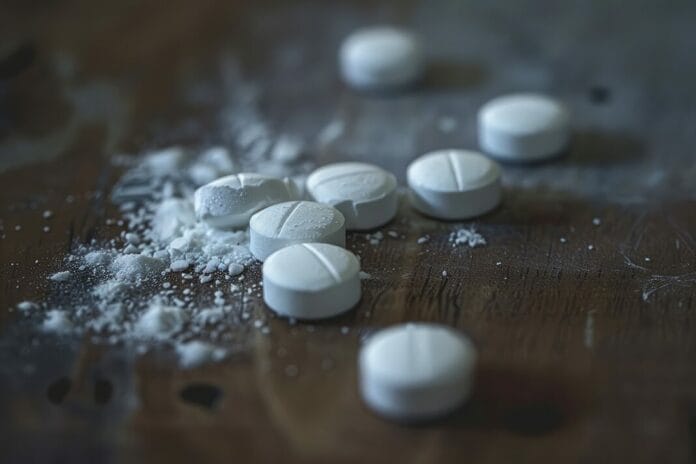Recently, while I was perusing social media, I came across an excellent question posed in one of the dental hygiene groups. The question was something along the lines of “I have a patient who is an admitted fentanyl user. What are the dangers as far as possible inhalation or contact with fentanyl when providing care for this patient?”
This is a fabulous question that hygienists may be concerned about, so I thought it was worth addressing.
I want to define a few things before I dive into the risks of treating a patient who is using fentanyl. First, I want to address the stigma associated with substance use disorders. For years, it has been assumed that substance use disorders affect a specific subset of the population. This assumption is by far inaccurate, as substance use disorders affect all walks of life.1
Accordingly, the first step in managing your thoughts and feelings about patients who admit to using any substance is to eliminate the stigma and judgment you may have.1
Second, it is essential to understand that substance use disorders are considered a chronic disease and can happen to anyone. Substance use can and does rewire the brain.1
We all likely have some “substance” use disorder, as addiction is not solely associated with drugs and alcohol. Drinking coffee, eating sweets, and shopping, among other relatively normal activities, can also be addicting.1
Fentanyl Exposure
I’m sure everyone has heard at least one story about law enforcement being affected by fentanyl exposure during a traffic stop or arrest. These stories can cause fear when considering being exposed. Even some of the glove boxes we use have a statement on them that assures us the gloves will protect us from fentanyl exposure.
But what is the reality of the possibility of passive exposure?
When considering dermal exposure or being exposed through touching fentanyl, it is important to understand that simply touching fentanyl will not cause an exposure, just like touching powdered sugar will not cause any changes in your glucose levels. You cannot overdose by touching fentanyl; it is biologically impossible. With that said, in no way am I advocating for anyone to touch or expose themselves to fentanyl purposely.2,3
Though there have been no confirmed cases of overdose from touching fentanyl pills or powder, it can be absorbed through the skin with constant direct contact over hours and days. Skin absorption of fentanyl can be increased with the use of alcohol-based hand rubs. However, the likelihood of overdosing from touching fentanyl is negligible.2,3
Nonetheless, if you suspect you have touched fentanyl, wash your hands with soap and water as soon as possible. You should avoid touching your face or putting your hands in your mouth before washing your hands.2,3
Breathing fentanyl secondhand smoke is also very unlikely to result in an overdose. Studies show that secondhand smoke from fentanyl does not produce enough contamination in the air to result in an overdose. It is worth mentioning that breathing any smoke (tobacco, marijuana, etc.) is unhealthy. It is best to leave the area or open windows and doors to get rid of the smoke.2
Fentanyl residue on surfaces does not cause enough contamination to result in an overdose. However, if you see or suspect residue is from powdered fentanyl or crushed fentanyl pills, do not open windows or do anything to cause the residue to get into the air. If you need to clean a surface or contaminated clothing, do so with an alcohol-free wet wipe or wet the area before wiping or laundering the clothes.2
Overdose Signs and Management
A more important concern should be the safety of the patient. Effective measures can be taken to manage patients potentially experiencing an opioid overdose. Naloxone is a safe and effective antidote for opioid overdose.4,5
In 2023, the U.S. Food and Drug Administration (FDA) approved the first over-the-counter (OTC) naloxone nasal spray.4 It is now available for anyone to access and carry with them. Naloxone is a lifesaving drug, and I encourage all dental professionals to consider carrying it with them when they visit public places as well as having access to naloxone in a clinical setting.
Signs of an opioid overdose include:5
- Unconsciousness or unresponsiveness
- Shallow breathing
- Limpness
- Blue lips, gingiva, or fingertips
- Slow or irregular heartbeat or pulse
Naloxone works very quickly after administration. Usually, the person will wake up within one to three minutes. In some cases, repeat administration is necessary. However, naloxone is a temporary treatment, and the assistance of emergency medical professionals is still warranted. Calling 911 immediately after administering naloxone is recommended. If you have someone there with you, have that person call 911 while you administer the naloxone.5
It is recommended that you stay with the person until emergency assistance arrives. Additionally, turning the person onto their side after administration of naloxone will reduce the risk of choking or aspiration.5
The best news about naloxone is if you happen to administer it to someone who is not experiencing an overdose, it will not harm the person. Naloxone can also be used for all age groups, including infants. Therefore, in the event of an accidental overdose, the administration of naloxone to infants, children, and older adults is safe.5
Newer Substance of Concern
Recently, reports of a new substance in illicit drugs such as heroin have been reported. The substance is medetomidine, a sedative used in veterinary medicine that has a similar action to Xylazine and dexmedetomidine. Dexmedetomidine is an isometric form of medetomidine approved for humans, and Xylazine is a sedative used in veterinarian medicine, but it is not approved for human use. All three of the substances mentioned above are non-opioid substances.6,7
Xylazine has been showing up in illicit drugs for several years, but medetomidine only began its recorded debut in 2022. It is essential to be aware of these newer substances in illicit drugs because they are non-opioid substances, which means that naloxone will not be effective at reversing an overdose. This highlights the need for immediate emergency medical intervention for all suspected overdoses.6
In Closing
It is estimated that around three million Americans meet the criteria for opioid use disorder. Opioid use disorder results in approximately 47,000 fatalities each year in the United States.8
Dental professionals may encounter patients who have used opioids and are at risk of experiencing overdose. Therefore, it is imperative to be able to recognize signs of an opioid overdose as well as have access to naloxone to manage an opioid overdose.
Multiple resources can be utilized for personal training or to train staff on proper naloxone administration. The Centers for Disease Control and Prevention (CDC) offers a great Naloxone Toolkit.9 If you have not taken training on naloxone use and how to recognize opioid overdose, I encourage you to consider utilizing the CDC’s toolkit.
The opioid epidemic is real, and though I hope you never find yourself in a situation that would require intervention, it is better to be prepared than unprepared. Access to naloxone and understanding opioid overdose signs can and does save lives. As healthcare professionals, dental hygienists should take the initiative to better understand opioid use disorders and how to manage emergencies that could arise due to opioid use disorders both in public places as well as in the dental setting.
Before you leave, check out the Today’s RDH self-study CE courses. All courses are peer-reviewed and non-sponsored to focus solely on high-quality education. Click here now.
Listen to the Today’s RDH Dental Hygiene Podcast Below:
References
- Is Addiction Really a Disease? (2020, September 2). Indiana University Health. https://iuhealth.org/thrive/is-addiction-really-a-disease
- Fentanyl Exposure in Public Places. (n.d.). Washington State Department of Health. https://doh.wa.gov/community-and-environment/opioids/fentanyl-exposure-public-places
- Connolly, L. (2022, October 18). Can Fentanyl be Absorbed Through Your Skin? UC Davis Health. https://health.ucdavis.edu/news/headlines/can-fentanyl-be-absorbed-through-your-skin/2022/10
- FDA Approves First Over-the-Counter Naloxone Spray. (2023, March 29). U.S. Food and Drug Administration. https://www.fda.gov/news-events/press-announcements/fda-approves-first-over-counter-naloxone-nasal-spray
- Access to Naloxone Can Save a Life During an Opioid Overdose. (2023, March 29). U.S. Food and Drug Administration. https://www.fda.gov/consumers/consumer-updates/access-naloxone-can-save-life-during-opioid-overdose
- Marino, R. (2024, June 22). A Closer Look at Medetomidine and Its ‘Unusual’ Patient Presentations. MedPageToday. https://www.medpagetoday.com/opinion/toxicology-report/110777
- What You Should Know About Xylazine. (2024, May 16). Centers for Disease Control and Prevention. https://www.cdc.gov/overdose-prevention/about/what-you-should-know-about-xylazine.html
- Dydyk, A.M., Jain, N.K., Gupta, M. Opioid Use Disorder. (2024, January 17). StatPearls. https://www.ncbi.nlm.nih.gov/books/NBK553166/
- Naloxone Toolkit. (2024, April 9). Centers for Disease Control and Prevention. https://www.cdc.gov/overdose-prevention/hcp/toolkits/naloxone.html











